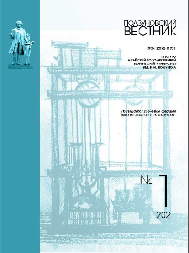PRELIMINARY STUDY ON DRIED GREEN BOTTLE FLY LUCILIA CAESAR “RESOURCE SAVING/DIVERSIFICATION”
doi: 10.25712/ASTU.2072-8921.2021.01.012
Keywords:
green bottle fly, larvae, Lucilia caesar, proximate, protein content, defatting, chitinAbstract
The green bottle fly (GBF) (Lucilia caesar) belongs to family Calliphoridae in order Diptera. A simple study was conducted to investigate the proximate composition and examine the green bottle fly larvae utilization possibilities by solvent defatting. Based on the proximate analyses, the crude protein content of ground green bottle fly larvae paste had significantly increased from 45.20 to 64.95 % after defatting. In similar manner, the ash and moisture content of the samples also increased to 7.10 and 4.95 % respectively. Additionally, the yield of extracted of green bottle fly was 31.03 %. The carbohydrate including fiber content have been recorded to increase from 16.03 to 23.01 % after defatting that those values signify the presence of chitin in the larvae. The findings indicate the possibilities of utilizing green bottle fly larvae in producing diversified products such as source of protein by concentrating for animal feed ingredients; as oil source for use in biodiesel trails; and sources of fiber/chitin to produce chitin derived product for industrial use. Thus, the study recommends further detailed research on the larvae.
Downloads
Published
How to Cite
Issue
Section
License
Copyright (c) 2021 Liudmila A. Nadtochii, Kiflom N. Tsige, Mohamed S. Boulkrane, Alena V. Proskura, Mariam B. Muradova

This work is licensed under a Creative Commons Attribution 4.0 International License.















 .
. This work is licensed under a
This work is licensed under a 
